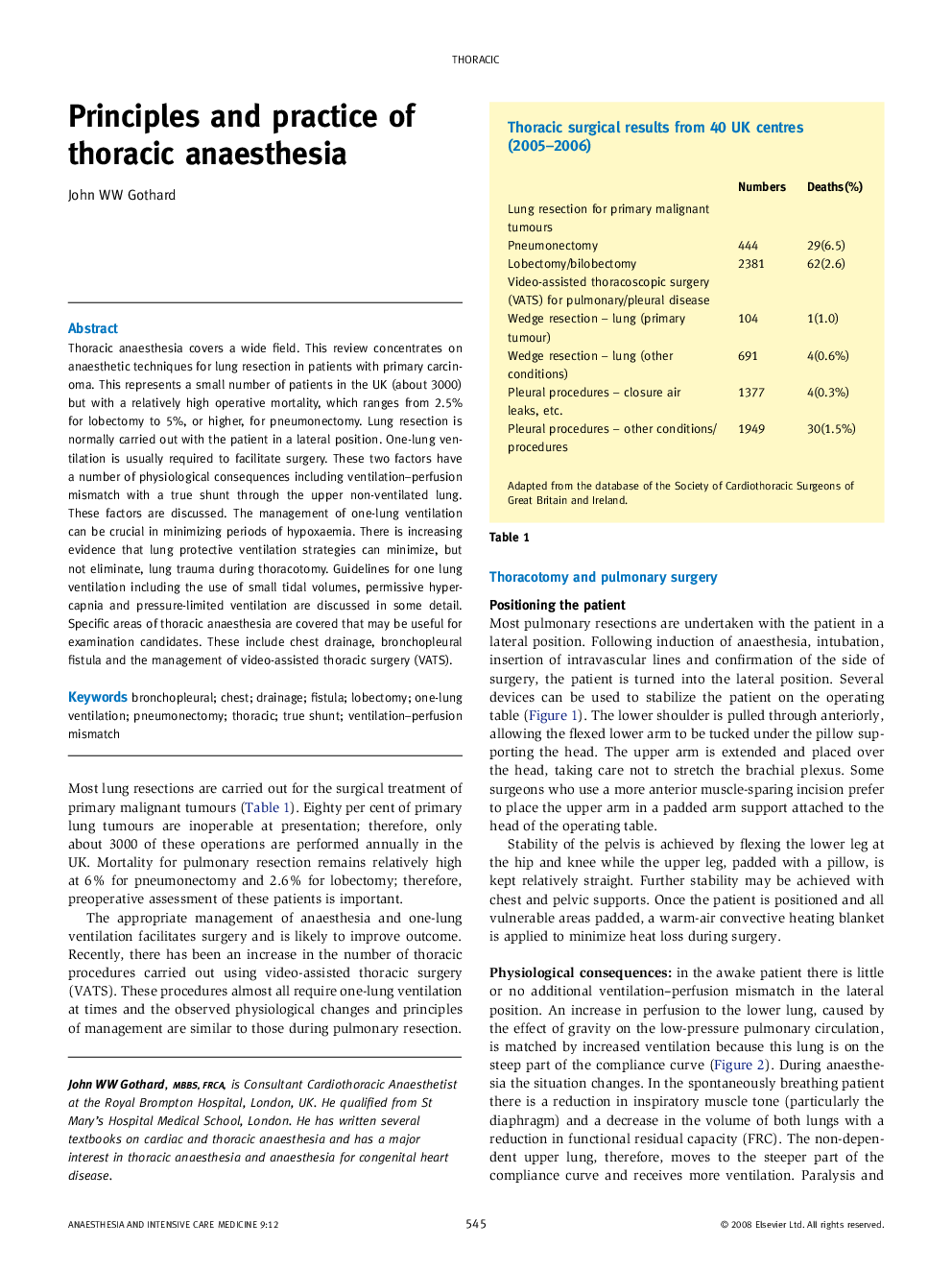| Article ID | Journal | Published Year | Pages | File Type |
|---|---|---|---|---|
| 2743393 | Anaesthesia & Intensive Care Medicine | 2008 | 5 Pages |
Thoracic anaesthesia covers a wide field. This review concentrates on anaesthetic techniques for lung resection in patients with primary carcinoma. This represents a small number of patients in the UK (about 3000) but with a relatively high operative mortality, which ranges from 2.5% for lobectomy to 5%, or higher, for pneumonectomy. Lung resection is normally carried out with the patient in a lateral position. One-lung ventilation is usually required to facilitate surgery. These two factors have a number of physiological consequences including ventilation–perfusion mismatch with a true shunt through the upper non-ventilated lung. These factors are discussed. The management of one-lung ventilation can be crucial in minimizing periods of hypoxaemia. There is increasing evidence that lung protective ventilation strategies can minimize, but not eliminate, lung trauma during thoracotomy. Guidelines for one lung ventilation including the use of small tidal volumes, permissive hypercapnia and pressure-limited ventilation are discussed in some detail. Specific areas of thoracic anaesthesia are covered that may be useful for examination candidates. These include chest drainage, bronchopleural fistula and the management of video-assisted thoracic surgery (VATS).
